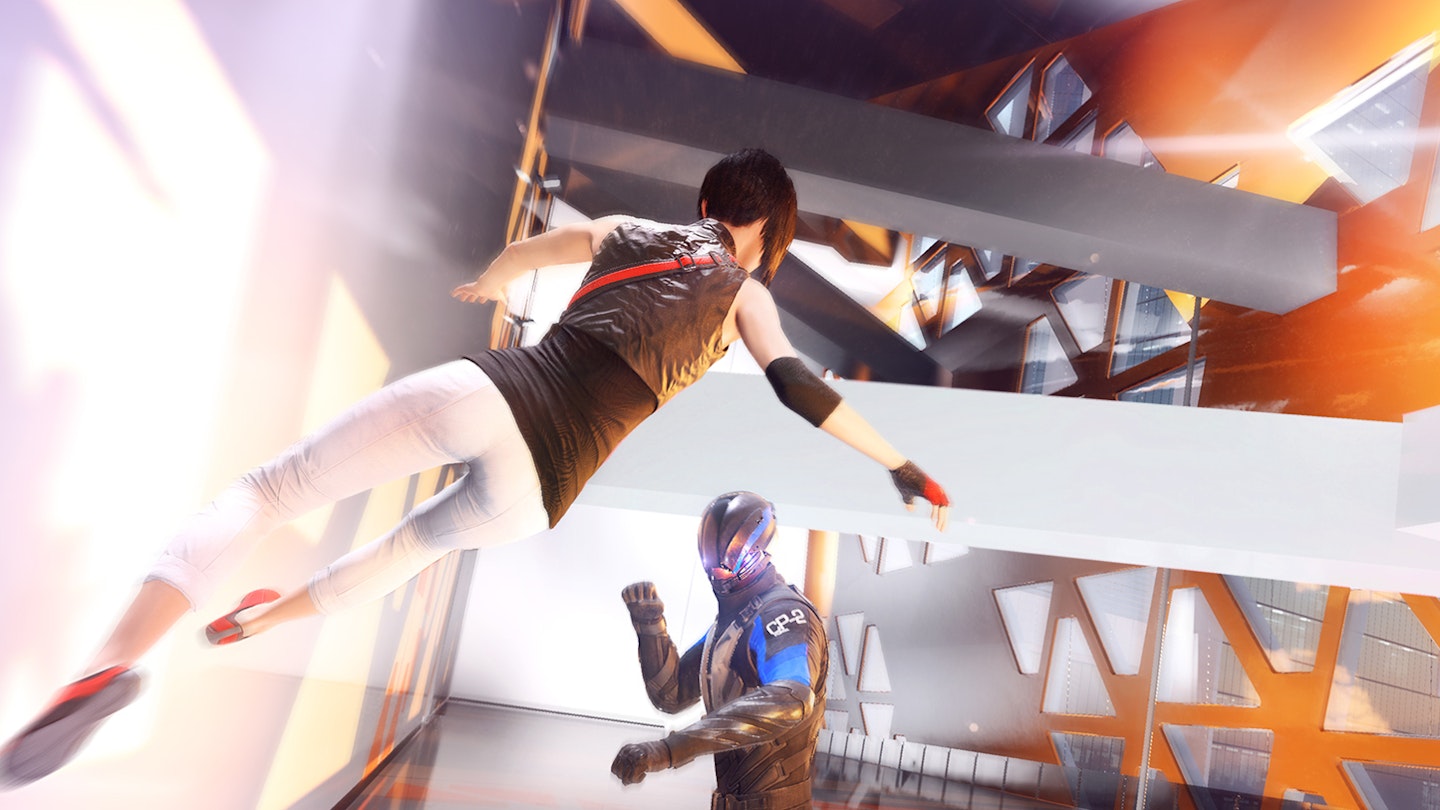The rumour goes that humans experience a curious calm in the expansive seconds after falling from a great height, before striking the ground below. It’s an idea that DICE, the Swedish creators of Mirror’s Edge: Catalyst, reject. Misjudge a leap from one of the game’s stratospheric towers to the next and lithe, freerunner protagonist Faith will flail her arms in terror while the scenery zips past. The camera fades out before she lands, like a spilled purse, but even in snapshot these falls provide the game’s most vivid moments. Video games demand peril in order to remain urgent. A game played out on sky-scraping rooftops is almost constantly perilous, constantly urgent.

Giddying, too, as veterans of the 2008 Mirror’s Edge – to which Catalyst is a long-awaited sequel – can attest. This is parkour played out in first person, with all of the wobbly camera work that entails. one button, for example, allows you to break a fall by launching Faith into a tumbling roll. The wheeling sky has a certain nauseating effect. Still, the free-running works far better than you might suppose. As Faith sprints between objectives, leaping over obstacles, sliding under beams, charging through doors and, later, swinging between platforms using a rope, play finds a punchy rhythm. Most objectives are timed (deliver this USB stick to a lady standing beneath that bridge, for example) and so it becomes a game of reactions as you tap the appropriate commands to overcome each incoming obstacle, like Guitar Hero played on a crane. At its best, Catalyst replicates the feel of those YouTube clips of Ukrainian crane-runners, combining athleticism, grace with formidable danger.
There are problems, however. Unarmed combat is painfully awkward in the first-person perspective. The overblown lunges and sideswipes render these fight scenes almost comedic. It’s possible to barge past most guards, but some of the main missions require you to clear a room before you’re allowed to move on. The futuristic city is, with its acres of white surfaces and swathes of glass, eminently stylish, but it is also indistinct. There are few landmarks by which to find your bearings; rather, you dutifully follow the red mist that leads to your next chosen mission, which is a bit of a missed opportunity in such a good-looking, urban open world locale.

A half-hearted upgrade system allows you to augment Faith’s abilities as you earn experience points for completing tasks. Most of the important abilities are, however, unlocked from the off, so there’s little incentive provided there. A littering of meaningless collectibles (which, as in the Assassin’s Creed series, weary the explorer’s heart, rather than inspire it) and a limp story complete the disappointing façade. For years fans have clamoured for a sequel to a game that showed blemished potential in 2008 and, while Catalyst does deliver, it also repeats many of its predecessor’s mistakes. But its shortcomings never quite obscure the fact that, beneath the frontage, this is a game built on sturdy foundations, ones that ably support the weight of its star.
